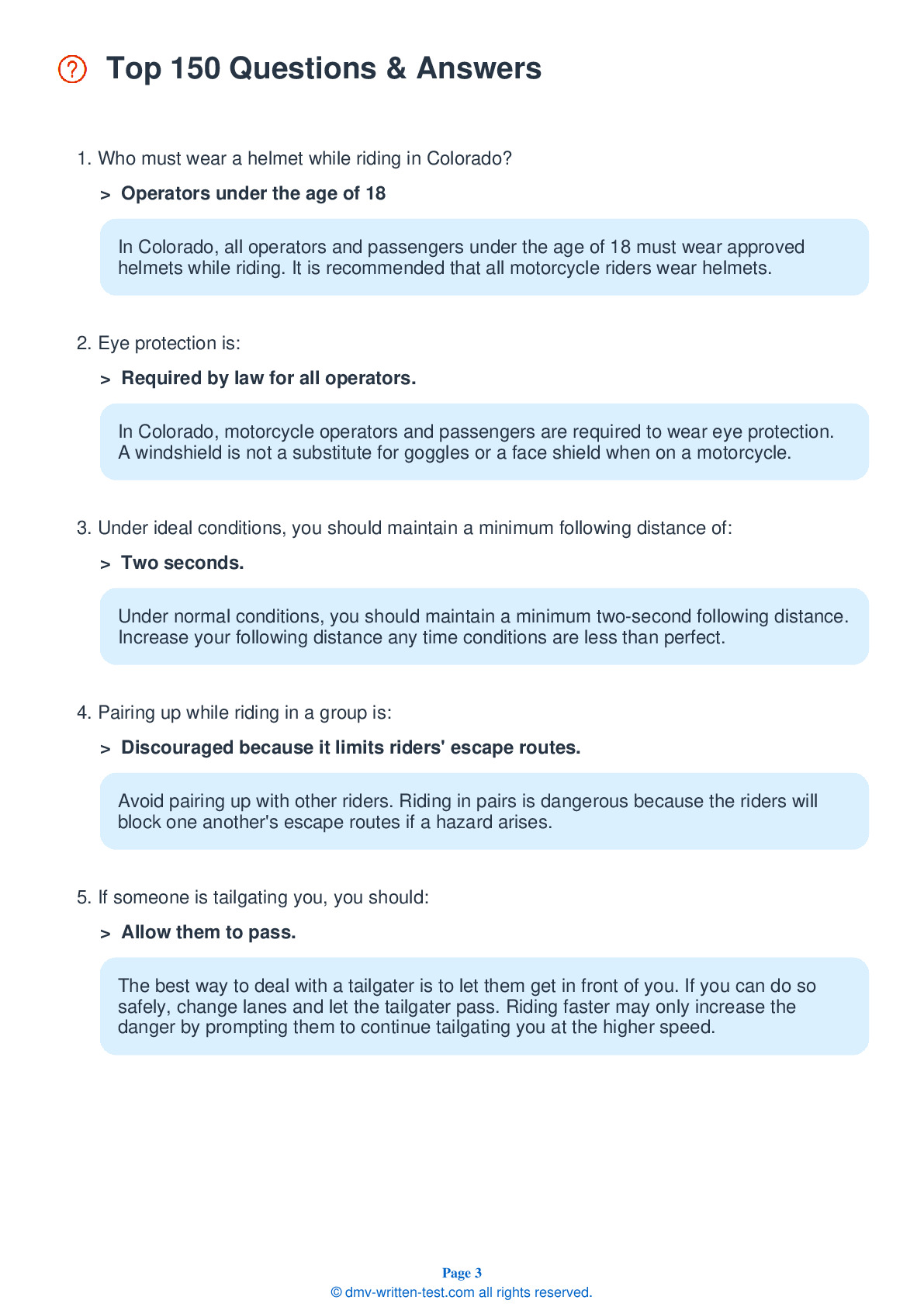2025 Colorado Motorcycle Permit Test 16
The following questions are from real DMV written motorcycle permit tests. These are some of the actual permit questions you will face in Colorado when getting your motorcycle learners permit. Each motorcycle theory practice test question has three answer choices. Select one answer for each question and select "grade this section." You can find this button at the bottom of the drivers license quiz. For a complete list of questions and answers for Colorado please visit https://cheat-sheets.dmv-written-test.com/en/colorado/motorcycle.
Number of Tests
Number of Question
Passing Score
13. Which of the following will help you ride safely on slippery surfaces?
Explanation
When riding on slippery surfaces, reduce your speed, brake using both brakes, and avoid sudden moves. Avoid the center of the lane and instead follow tire tracks left by cars. Always keep an eye out for hazards that may make a road surface especially slippery, such as oil spots and loose gravel.
14. When being passed, do not move into the portion of the lane farthest from the passing vehicle because:
Explanation
When being passed, you should not ride on the side of your lane that is farthest from the passing vehicle. Doing so may tempt the driver to return to your lane before there is actually room for them to do so safely.
15. Your lane position should not:
Explanation
A properly chosen lane position should provide a number of benefits, including an increased ability to see others and to be seen. It should help you avoid wind blasts, other drivers' blind spots, and surface hazards. Your lane position should discourage other drivers from trying to share your lane and provide you with an escape route, should a hazard arise.
16. Which type of sign is yellow with black lettering or symbols?
Explanation
Warning signs are yellow with black lettering or symbols and provide important information to motorists about upcoming road conditions.
17. Which of the following is a poor reason to sound your horn?
Explanation
It is a good idea to sound your horn before riding past a vehicle or pedestrian that may move into your lane. If you see a driver in an adjacent lane driving too closely to the vehicle ahead of them, you may assume that they want to pass and may cut in front of you to do so. If you see a person in the driver's seat of a parked car, or if you see a pedestrian or bicyclist in the street, it is a good idea to sound your horn as you pass.
18. If you must brake and swerve to avoid a hazard, you should:
Explanation




